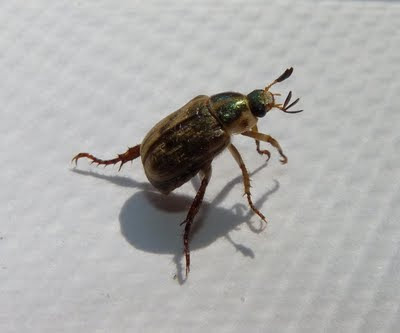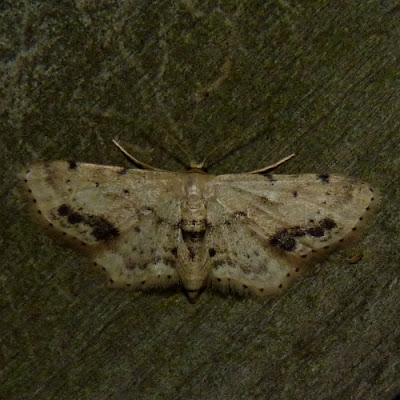Many of us first encounter birds around home. It may be the experience of seeing finches crowd around bird feeder in winter, hearing a cardinal singing every morning at dawn, or watching baby robins grow and fledge from a backyard nest that sparks for a lifelong interest in birds. Some may go on to feed birds themselves, others may start to seek out birds in parks and wildlife refuges. Publishers of nature books try to address both types of birding with guide books for field identification and for bird feeding. There are a variety of such books already. Over the past year, three more books on attracting and identifying backyard birds became available.
Most of the book is a bird guide with identification and distribution information for 150 North American species. The species selection emphasizes common species that are likely to turn up in a backyard setting. There are, of course, a lot of species left out; I can think of a few species on my yard list that are not in the guide. Species accounts are illustrated with the paintings familiar from other National Geographic field guides. The selection seems regionally balanced, though there are some cases like screech owls where the eastern species is shown but its western counterpart is only mentioned and not illustrated.
The National Geographic Backyard Guide to the Birds of North America will be most useful for someone who may not be a birder but maintains a bird feeder and wants to know what types of birds are visiting it. This is not a useful book for field birding, and if you already have a comprehensive field guide for North American birds, you will not need this one.
In the past year, Bill Thompson III authored two books on backyard birds, Identifying and Feeding Birds and Hummingbirds and Butterflies, the latter co-authored with Connie Toups. Both books are branded under the Peterson Field Guide Series and the Bird Watcher's Digest labels. Both provide detailed information on attracting, feeding, and identifying birds in a backyard setting.
Identifying and Feeding Birds covers birds across all species groups. Written in Thompson's informal style, its chapters on bird feeding and backyard habitat improvement are more expansive than those in the National Geographic guide. Thompson offers advice on things to do (and not to do) while providing food and shelter for birds. He emphasizes that bird feeding is done primarily for people – except in unusually harsh conditions, birds can find everything they need in nature. From that perspective, feeding should attract birds to places where people can view them while keeping the feeders as safe and beneficial for the birds as possible. Thompson provides advice on types of food to offer, types of feeders to use, proper placement of feeding stations and water features, and safe nesting sites. A separate chapter is devoted to special cases, like hummingbirds, bluebirds, and winter finches.
The second half of the book provides identification and distribution information for 125 species of birds. Like the National Geographic guide, Thompson's guide selects common species that are likely to appear in backyards across North America. Unlike the National Geographic guide, which uses the painted illustrations from its flagship field guides for its identification section, Thompson's book is illustrated with photographs of the backyard bird species. There seems to be a bit of a bias for eastern birds; particularly in many species that have distinct eastern and western forms (like Fox Sparrow), the eastern form is illustrated while the western form is not.
Hummingbirds and Butterflies by Thompson and Toups covers similar ground as Identifying and Feeding Birds, except with a narrower focus on the special needs of these two wildlife groups. Hummingbirds and butterflies make a natural pair, as they have similar feeding needs as adults, even though they belong to very different branches of the animal kingdom. They have other apparent similarities, in that hummingbirds are often noted as having an insect-like flight, and both hummingbirds and butterflies may be colorful and boldly patterned.
The book provides substantial information on the biology and behavior of hummingbirds and addresses some misconceptions that have come to us through folklore. Hummingbirds consume two types of food: insects and other tiny invertebrates (like spiders) for protein and nectar for energy. People can help with the second by planting appropriate flowers and maintaining clean hummingbird feeders filled with sugar water. Thompson and Toups describe how to maintain hummingbird feeders and recommend regionally appropriate plantings that are attractive to hummingbirds. The hummingbird half of the book concludes with species profiles of 15 hummingbirds that breed north of the U.S.-Mexico border.
Butterflies are treated in a separate section from hummingbirds. In some ways, it would make more sense to integrate the sections on hummingbirds and butterflies since they both rely on a lot of similar plants as nectar sources. However, butterflies have differing life histories from hummingbirds, so I can see why Thompson and Toups chose this arrangement. Butterflies have different food needs at different stages of their lives. When they first hatch as caterpillars, they need access to their larval host plant. Some species rely on a wide variety of host plants, but many require one or two specific plants. Once a butterfly has passed through its larval and pupal stages and emerges as an adult, it drinks nectar to provide itself with energy as it searches for a mate to reproduce. Thompson and Toups have advice for how to meet butterflies' needs at each of those life stages, including long lists of specific recommendations for regionally appropriate host and nectar plants. The butterfly half of the book ends with species profiles for 40 butterflies that are common across North America.
If you already have books on bird feeding and backyard wildlife habitats, these books will probably not add much to your existing knowledge. If you are primarily want a resource for backyard bird identification, the National Geographic Backyard Guide to the Birds of North America is probably the better choice among these three books since it covers a broader selection of species. (A comprehensive field guide would be more appropriate if your birdwatching will go beyond a backyard.) Identifying and Feeding Birds and Hummingbirds and Butterflies are better choices than the National Geographic book for detailed information on bird feeding and backyard wildlife habitats. Identifying and Feeding Birds probably makes the best complement to a standard field guide among the three books since it addresses the food and habitat needs of a broad variety of birds. Hummingbirds and Butterflies covers a distinctive niche very well.
Books reviewed:
- Jonathan Alderfer and Paul Hess, National Geographic Backyard Guide to the Birds of North America. Washington: National Geographic Society, 2011. Amazon
- Bill Thompson III, Identifying and Feeding Birds. Boston and New York: Houghton Mifflin Harcourt, 2010. Amazon
- Bill Thompson III and Connie Toups, Hummingbirds and Butterflies. Boston and New York: Houghton Mifflin Harcourt, 2011. Amazon





















































